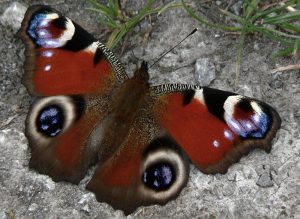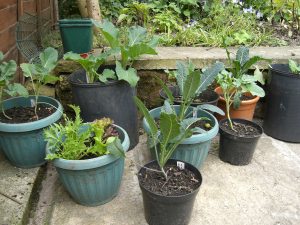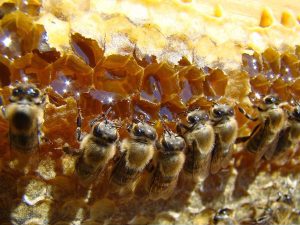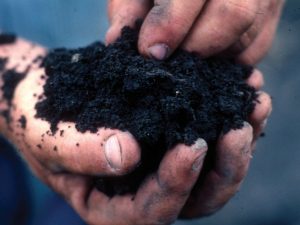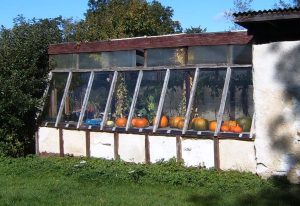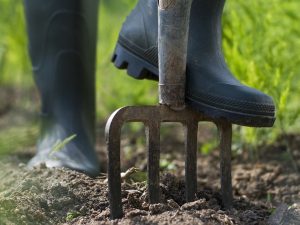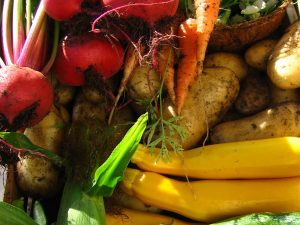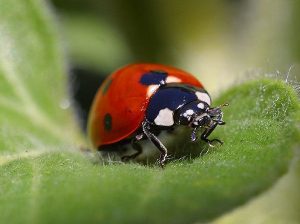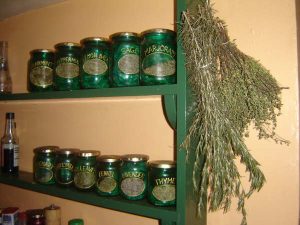Flower growing - introduction

“People from a planet without flowers would think we must be mad with joy the whole time to have such things about us.” – Iris Murdoch
Contents
What is flower growing?
This topic is about growing your own flowers to cut for the house, for gifts, or for family events, instead of buying them from florists, supermarkets or petrol stations. Historically, people didn’t buy bunches of imported flowers. Until a generation or two ago, you either grew your own cut flowers, or bought them from a florist who sourced UK-grown flowers from a wholesaler or directly from Covent Garden flower market. Country people grew cottage garden flowers to brighten up their cottages, and grand people had teams of gardeners, hot-houses and walled gardens to produce stunning cut flowers for the Big House.

Until the 1950s there was a thriving UK flower-growing industry. Then came lorries and air-freight, and the UK flower industry disappeared, until by 2006 there were only about half a dozen commercial flower growers in the UK. There’s now, thank heavens, a renaissance in UK flower growing, with commercial growers now numbering in the hundreds, many of them artisan-scale.
Flowers can be classified into half-hardy annuals (which you sow in the spring to flower in the summer), hardy annuals (which you sow in the early autumn to flower next spring and summer), and perennials, which are plants or bushes which live and flower for many years. There are also bulbs, which may be autumn planted, spring planted, or just left in the ground to do their own thing year after year.
What are the benefits of flower growing?
Self-provisioning / personal
Gaining any craft or growing skills can help meet your and your family’s needs, save you money and bring a lot of satisfaction and pleasure. If you really enjoy flower growing, this could evolve into a small business selling some of your home-grown flowers.
Although supermarket flowers are relatively cheap, the cost over a year for various events can still add up to quite a lot, and if you buy fancy cut flowers from florists or garden centres, just one bunch might set you back £10-20. So you can save a lot of money by growing your own, plus you get fresh flowers every day, and access to types of flower that you never see for sale – including flowers with better perfume, as the commercial varieties are selected for appearance to the detriment of scent.
Gardening increases your sense of well-being. There’s something about being in contact with nature and the seasons that makes gardeners happier – this ‘something’ is also used in horticultural therapy and eco-therapy as a treatment for the mind. Physically, gardening keeps you active and improves fitness: while you are gardening you’re not sitting at a desk or in an armchair!

Decentralising power away from corporations / building community
Providing things for ourselves in communities helps prevent extraction, decentralises power away from corporations (which makes it more difficult for them to corrupt democracy) and democratises work.
Flower gardening improves local communities (people stop and talk to you if you garden in your front garden or on the pavement outside your house).
Environmental
Flower gardening attracts and supports wildlife, and of course growing your own flowers cuts out the pesticides and CO2 which emanate from the huge industry of chemical-drenched, intensively-grown flowers that are first air-freighted around the world then lorry-freighted around the country, often wrapped in excessive and non-biodegradable packaging.
Flowers aren’t subject to the same kinds of regulation that food crops are, and therefore pesticide use tends to be much higher for flowers, with subsequent destruction of biodiversity and soil biota. And it’s a hugely water-intensive industry (over 7 litres for one rose!), which has huge negative implications for both nature and people in poor countries.
More and more flowers are grown in tropical regions, far from their largest markets, in the West, where wages and environmental and employment regulations are less stringent. They travel in refrigerated trucks and planes, with a huge carbon footprint. But actually, flowers grown in the Netherlands for a European market have been found to have an even bigger carbon footprint because they tend to be grown in (often heated) greenhouses; and the commercial flower industry also seems keen on inventing new horrors, such as floral foam, which fits inside packaging, holds water and supports floral displays.
More environmental problems associated with the flower industry.
What can I do?
If you’re buying flowers, try to buy local (so seasonal) and sustainable, with as little (biodegradable) packaging as possible, and of course avoid floral foam. The Sustainable Floristry Network can help (see their directory).
But if you’re up for it, it’s simple to make a start on growing your own flowers – essentially, all you need to do to get going is buy a few packets of seed and a bag of compost, and buy or improvise some pots. You’ll need much less space than most people imagine. At a minimum, you need a few big pots on a balcony or outside a flat to grow flowering plants in, and a window sill and a couple of small seed trays or old food trays/yoghurt pots to sow the seeds and nurture the baby plants. If you have a garden or access to some land, then a couple of beds, 2.4m by 1m will go a long way to making you self-sufficient in cut flowers, and an area 3m x 4m is plenty. If you can set aside a separate area of garden for your ‘cutting garden’ that’s ideal, but instead you could intersperse rows of flowers between rows of veg in your veg patch.

You’ll need to buy some seed compost, and if you’re growing in containers, you’ll also need to buy compost to fill your big pots and tubs. For environmental reasons, it’s important to avoid peat-based compost (see Earth Friendly Gardener’s useful test-report on peat-free compost brands).
If you’re starting in the spring, then sow some half-hardy annuals in seed trays on a window sill in March onwards, in an unheated greenhouse or coldframe during April, or direct in the ground in late April or May. Flowers such as cosmos, zinnias, snapdragons, salvia patens, and rudbekias grow easily and will give a huge supply of flowers for cutting for several months.
If you have space, you’ll also want to grow some perennials, which you usually obtain as small plants from nurseries, friends, market stalls or garden centres (if using a garden centre, try to use a local independent rather than a branch of a big chain). A good starting selection would be a couple of roses, astrantias, lavender, Japanese anemones, and some herbs (e.g. mint, rosemary, sage, oregano) which are great to use as foliage in arrangements, and have the benefit of being very useful in cooking too!

During the flowering season, you really need to cut blooms every day. The more you cut, the more flowers the plants will produce. If you leave flowers to wither and go to seed, the plant will stop flowering, so dead-heading is a must – i.e. once they are past their peak, remove any flowers that you don’t cut for arranging. The benefit of this regime is that every day you’ll have fresh flowers for yourself or for giving away or even selling. The downside is that you can’t go away from home during the growing season! Of course, if you really need to go away, you can arrange for a friend or neighbour to come round and cut your flowers daily – they might be rather pleased to be asked, as they’ll then benefit from your lovely cut flower garden.
In late summer or early autumn you can sow seeds for hardy annuals such as sweet peas, cornflowers, euphorbia, lady’s mantle and love-in-a-mist. These will usually survive winter temperatures with no protection, but a coldframe or mini-greenhouse would be useful in helping them to thrive, for larger, earlier-flowering plants in the spring. It can also provide useful protection for half-hardy annuals sown outdoors in the spring, and for autumn cuttings of perennials if you get that enthusiastic.

What equipment or tools will I need?
Equipment-wise, there’s very little you really need for flower growing other than a selection of pots, seed trays, a hand fork and trowel, and some secateurs (or strong sharp scissors) for cutting blooms. A garden spade and garden fork will be handy if you have more ground (opt for the slightly smaller versions called ‘border forks’ and ‘border spades’). A hoe is almost essential if you’re growing your flowers in rows in the ground – hoeing regularly between the rows keeps weeds from becoming a problem. A window sill and a couple of plastic propagators (seed trays with tall plastic covers) are all you really need for starting seedlings, but a coldframe or small outdoor greenhouse will be very useful if you have space for them.
What difficulties might I face?
Just growing some flowers to cut for yourself and friends is moderately easy. Flower growing only gets more difficult if you’re having to plan and prepare for a particular event – for example growing the flowers for a family wedding. That takes more experience in planning what will be in bloom at a particular time, and what to grow in reserve in case the season turns out unusually late or early.
As with anything you do, you’re bound to run into some problems. Some of these problems will probably be in the form of animals such as slugs or pigeons eating your young plants. Netting can protect plants from birds, and if you have a serious problem with slugs try growing your baby plants bigger before planting them out (also see our introduction to natural pest and weed control for more ideas).

How much time will I need?
Apart from a little time spent cutting blooms every day in late spring, summer and early autumn, you’ll probably find that flower growing mainly needs some concentrated periods of time in spring and autumn when you’re sowing seeds, potting on seedlings, and planting out young plants. If you get really hooked on gardening, of course, it will soon take up every available waking hour – it’s very addictive.
Further resources
- Flower Gardening Guide (pdf) – month-by-month guide
- Flowers from the Farm – association of sustainable, local cut flower growers
- the British Flower Collective – directory of UK seasonal, local flower growers
Specialist(s)
Thanks to Rachel Petheram of Catkin English Country Flowers for information and photos.
The specialist(s) below will respond to queries on this topic. Please comment in the box at the bottom of the page.

Dr Rachel Petheram is an artisan florist, a gardener and a teacher. She was one of the original grower/florists who were part of the revival of using British grown flowers in floristry. She now runs Catkin English Country Flowers, providing flowers, courses and one-to-one training.

